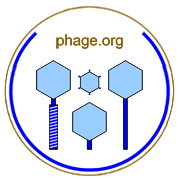

Virus adsorption to a cell that is already hosting a virus infection, potentially with additional interactions subsequently occurring between the virus and the same cell.
Alternatively…
Infection of cells by viruses that have been produced by similarly located cells such as found within the same culture.
The concept of secondary infection is also used more generally to describe an infection by a pathogen of an already pathogen-infected organism. This more general usage is somewhat equivalent to the first definition, i.e. a second infection of an individual cells (contrasting primary infection). The second definition, by contrast, is equivalent to the usage from epidemiology.
The first definition is as employed by Doermann (1948), there defined more or less equivalently to secondary adsorption though at the time there does not appear to have been an appreciation of a potential for a difference between the two concepts. The second definition is used by Payne and colleagues (2000; 2001) and refers to infections that are initiated by the burst products associated with primary infections (that is, initially/previously infected bacteria). Another way of looking at the difference is that in the first sense virus release from the primary infected cell does not occur prior to secondary infection whereas with the second sense of secondary infection virus release from the primary infection, by definition, does occur prior to secondary infection.
With regard to Doermann's definition, it is now understood that superinfection exclusion can interfere with the infection of bacteria that are already phage infected, meaning that secondary adsorptions are not necessarily also secondary infections. Thus, in certain circumstances it can be (arguably) more accurate to use the term secondary "adsorption" rather than secondary "infection", i.e., depending upon how one defines the terms infection versus adsorption along with how far the secondary virus is able to progress in its adsorption and/or infection.
The concept of secondary infection was employed by Doermann to describe the mechanism of T-even phage lysis inhibition phenomenon where an extended latent period is induced by secondary "infection" of an already phage-infected bacterium. Doermann, though, also uses the term secondary "adsorption" to describe this same inducing event.